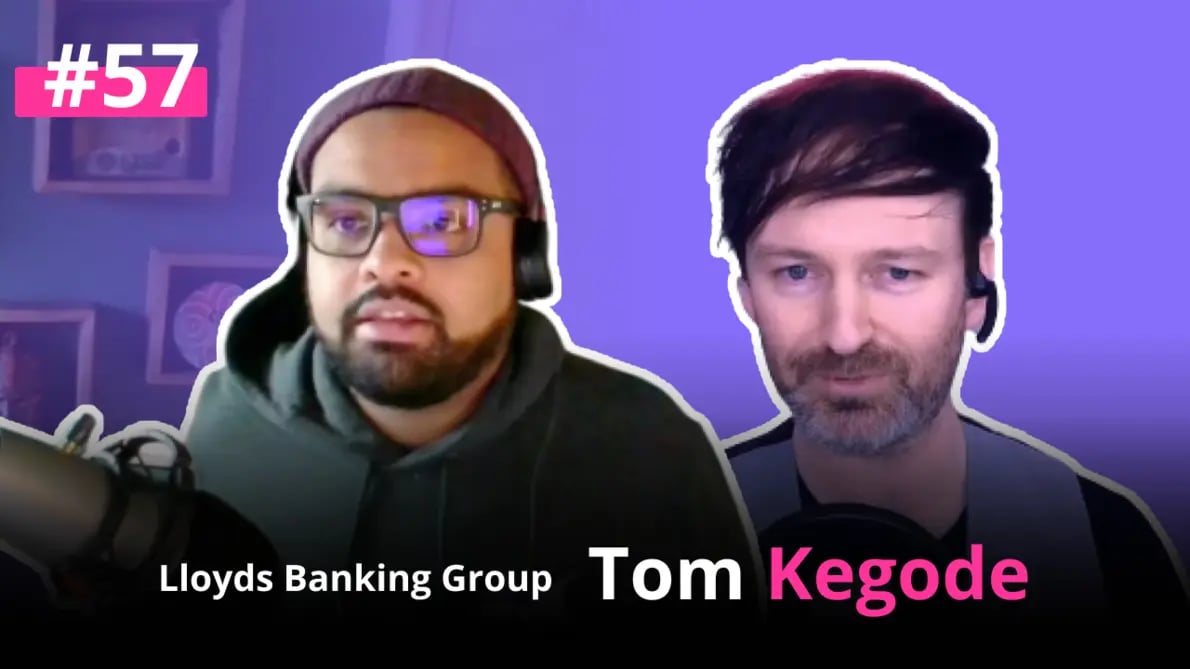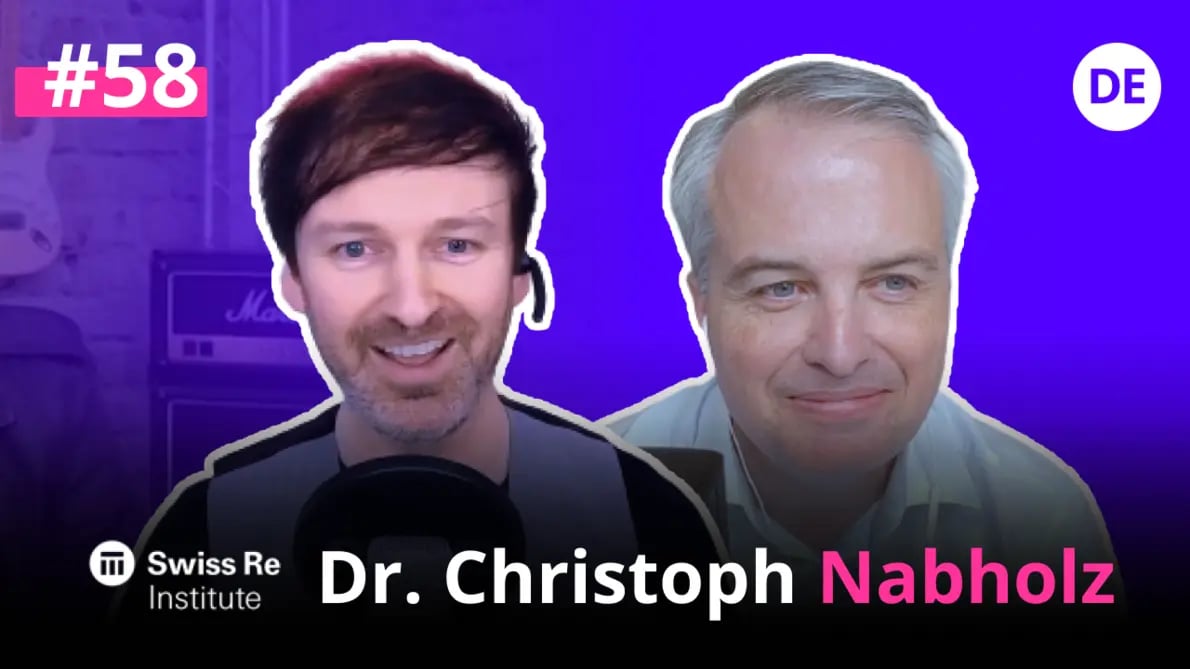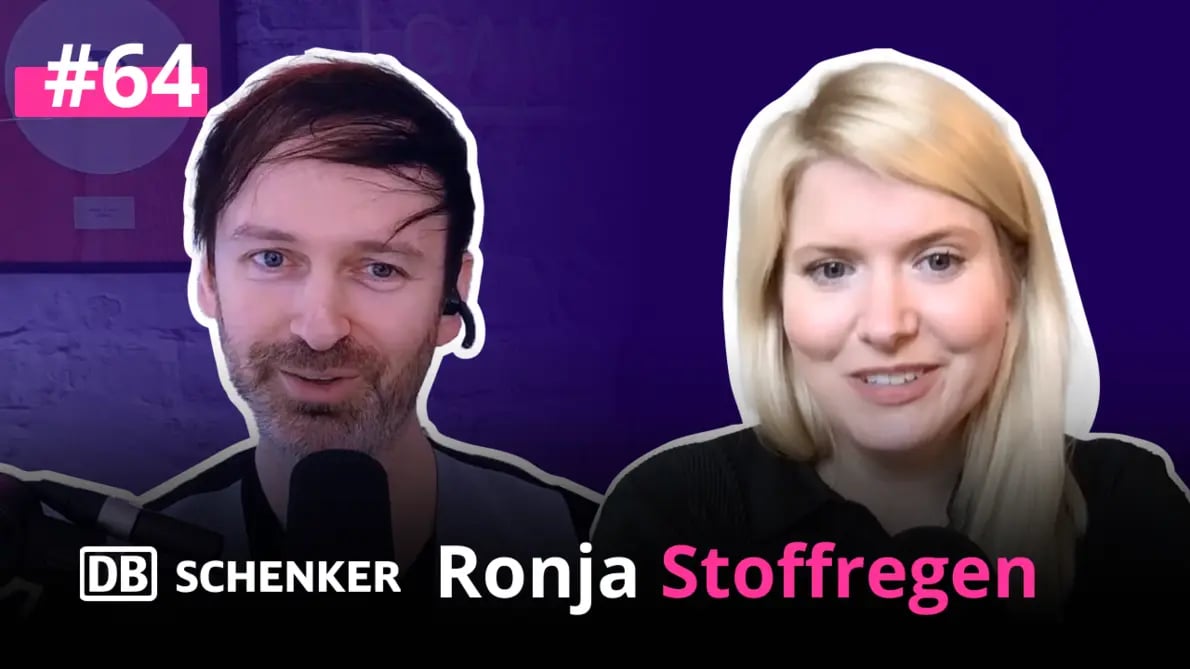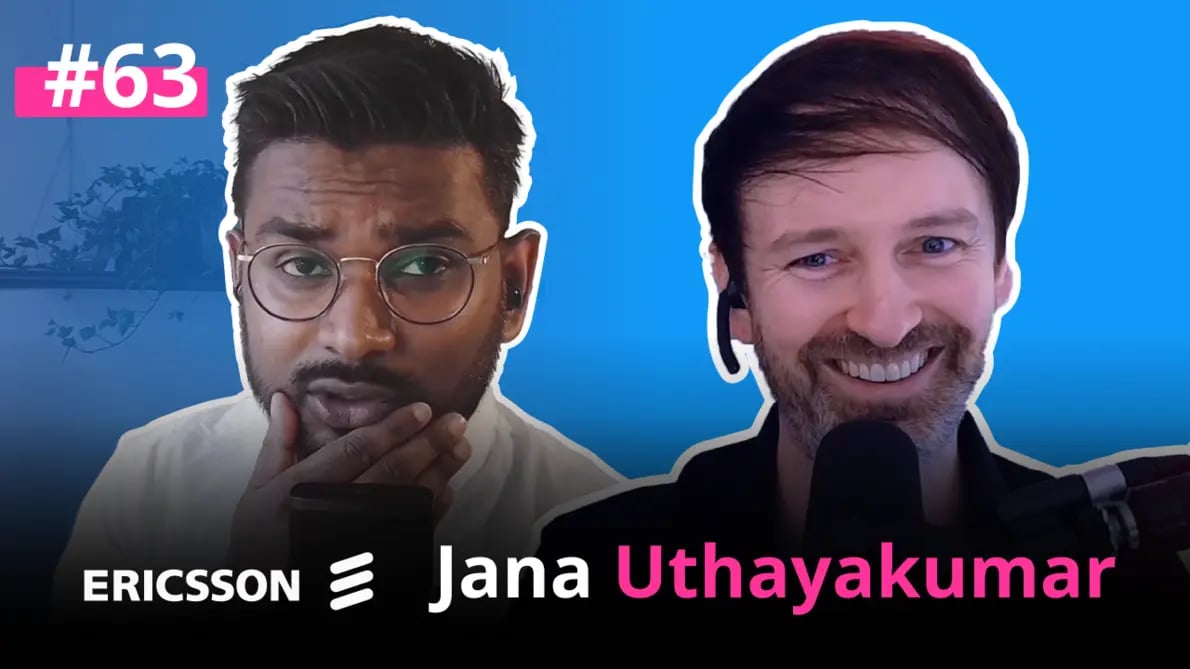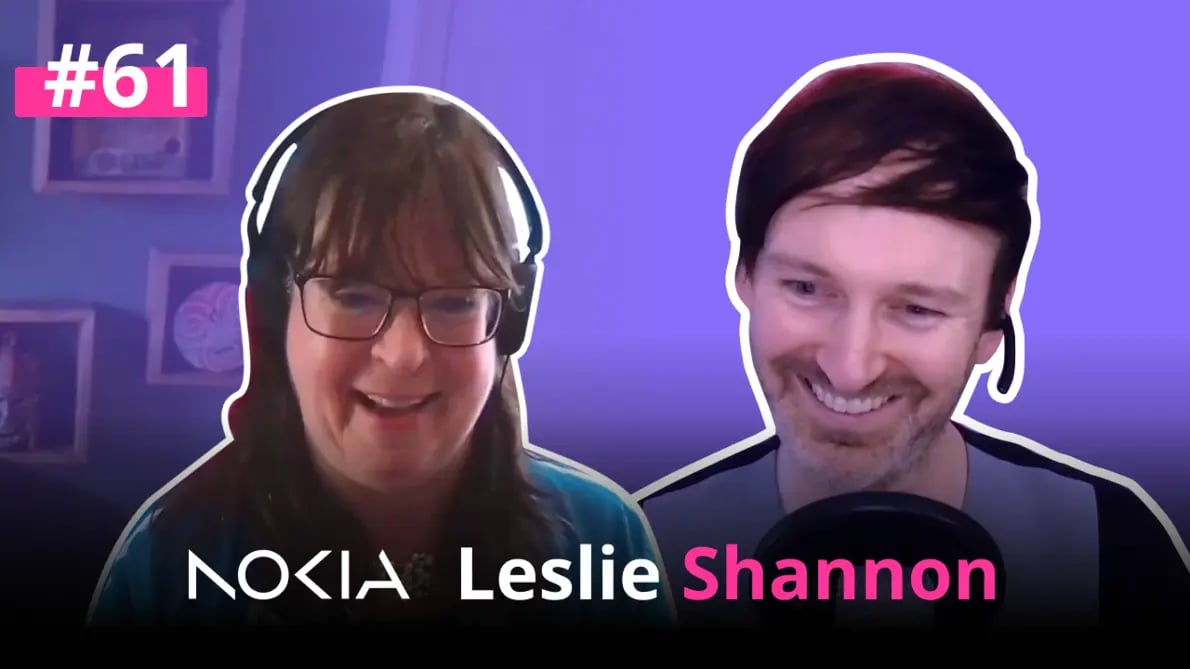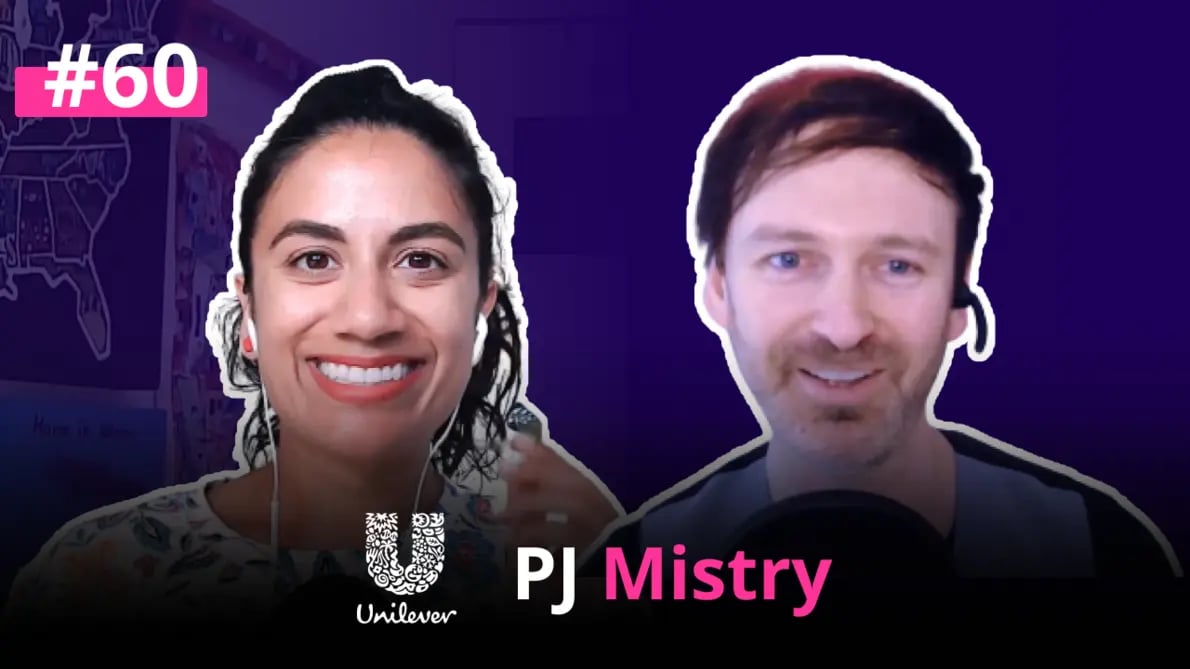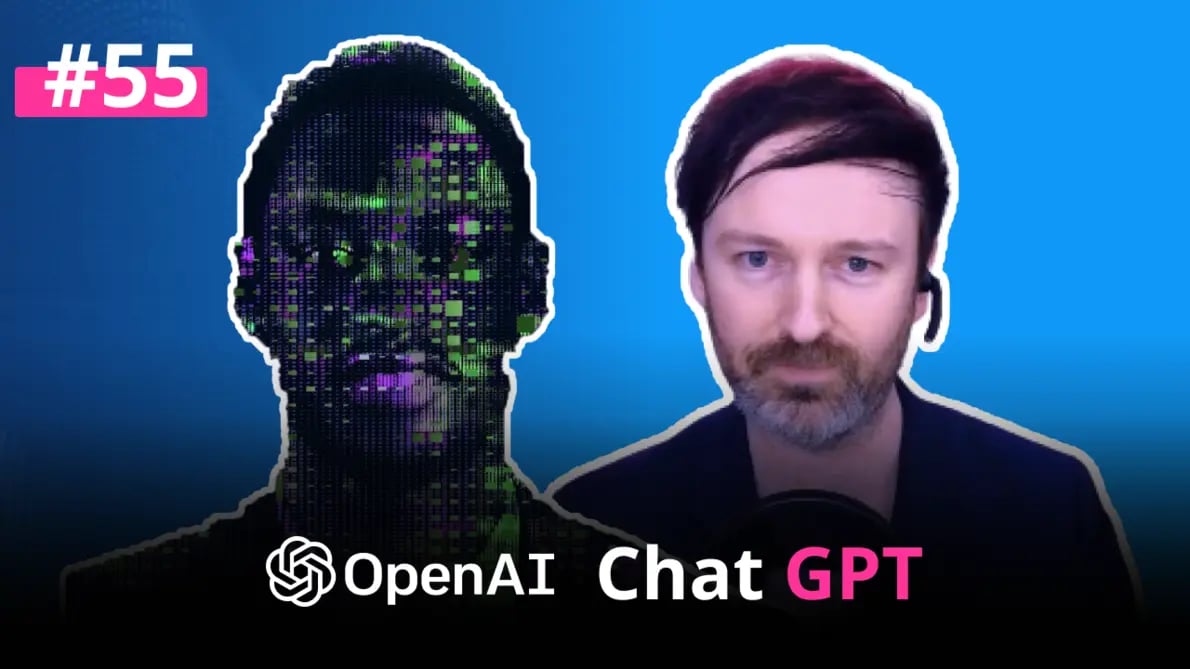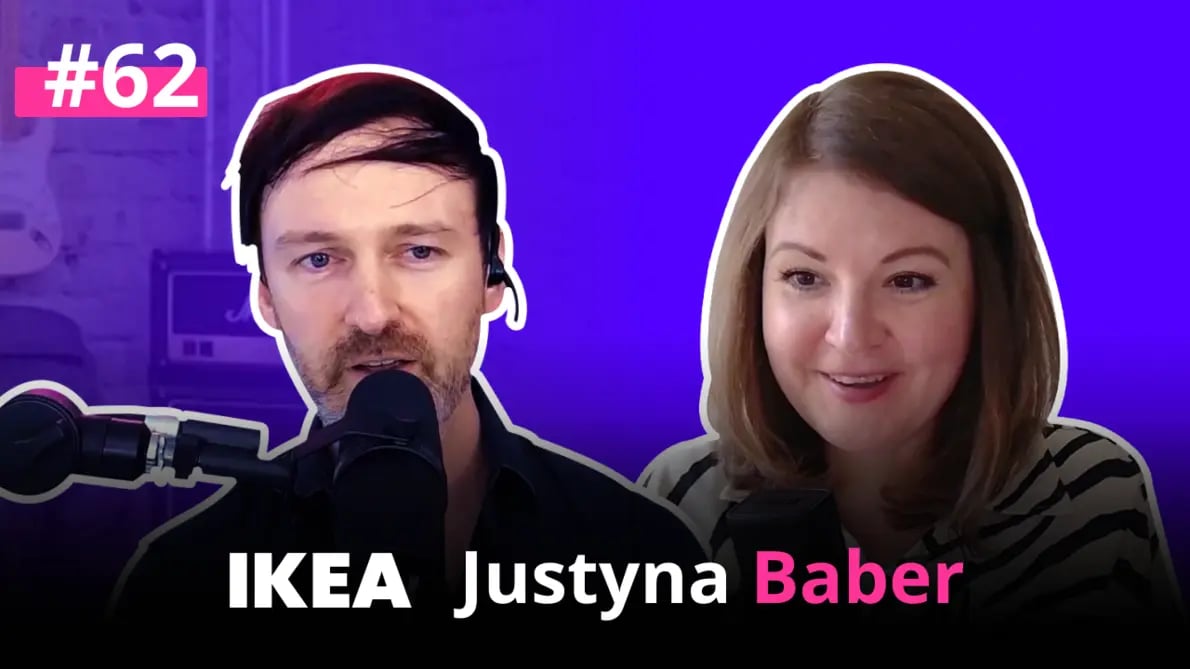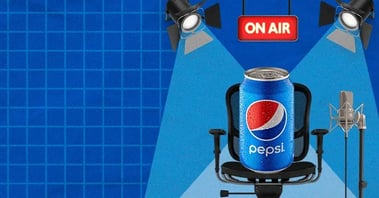The virtual stage of our Innovation Rockstars video podcast has seen a string of experienced leaders as guests, including one that’s not even human! We’ve enjoyed hearing their honest answers to Dr. Christian Mühlroth’s quick questions, as well as real-life stories of challenges, breakthroughs, and lessons learned. Here, we’ve compiled a top 10 list of last year’s podcasts featuring innovation experts from a range of industries.
Our top 10 innovation podcast episodes in 2023
10. Tom Kegode of Lloyds Banking Group
In this episode, Chris Mühlroth interviewed Tom Kegode, the People, Comms, and Connections Lead at Lloyds Banking Group. Describing himself as a ‘friendly disruptor,; Tom shares insights on creating an inclusive workplace and tools for impactful hybrid working. Chris asked how he fosters creativity when colleagues aren’t in the same room. Tom answered:
‘One of the things we did learn when we were working in a much more virtual environment was that it kind of democratized some of the creativity and innovation. Because you didn't need to be in that physical room, you could be in the room from wherever you were. One of the things I did was a series of meetings—really short, sharp workshops that I would call an ‘ideation kickabout.’ It was a 30-minute slot in which we covered three big questions. We'd be working with somebody from a part of the business that needed feedback from colleagues on those big questions. So we would do the ideation in the chat; it's live in the channel, so you don't have to move out of there; you can just drop a comment. We'll say, “This is the big question. What do you think? We want to hear from you; we want to make it inclusive. Raise your hand to give your idea, and share your feedback. But also, we really want to see your comments in the chat.” So we've got a multi-channel way of capturing that creativity from the room and the ideas that are coming through from them. By building creativity into the workflow, rather than trying to direct people to specific platforms, we remove that extra element of friction to getting an idea out on the table. We want to try to make it as easy as possible.’
9. Nic Umana of Mars
Nic Umana, Global Agile Innovation Human Intelligence Director at Mars, emphasized the importance of balancing data-driven decision-making with human-centered innovation. Chris asked Nic about her team’s approach to new product decision-making:
‘I know this is a buzzword, but genuinely, the biggest buzzword for us is ‘failing fast.’ So yes, it helps to go faster, but it helps to not waste a whole lot of time and money in scaling something that isn't going to work. So the biggest benefit we have is being able to fail small, to be able to take that learning and apply it to something else that we're doing. And when we talk about agile innovation, we talk about how do you learn with humans, and how do you create value as quickly as you can? So instead of spending like seven years designing the perfect something that we're then going to roll out to every market around the world, we start with a single MVP in a single city, in a single store, and then learn and optimize and slowly scale, as opposed to just blasting something out there all at once. So that's working pretty well for us at the moment. And it's saving us a lot of time and money. So we find something that teams are working on that we think is ahead of its time. It might go on the bench, and we put the team onto the next project. We're not as good at killing projects as we'd like, but we're trying to get better about what is the hypothesis that will help us kill this project. And so we can get you working on something else that will be more valuable. So we try to get teams attached to the learning rather than the outcome. It's not a failure if you decide to kill your project. In fact, we celebrate that.’
8. Dr. Christoph Nabholz of Swiss Re
Chris was joined by Dr. Christoph Nabholz, Chief Research Officer and Head of the Research, Engagement & Sustainability Team at Swiss Re Institute. Christoph foresees a future where IoT could do for property insurance what wearables did for incentivizing health insurance clients, and described how that could support risk mitigation:
‘So it's all about this dynamic information, right? And making sure that you can intervene before the loss not just happens, but escalates. Think about your CO2 sensors that you have at home. Or these days, you have sensors that actually control if you have a water leakage. So I think these sensors and the Internet of Things is helping us to bring that all into one oversight where you can manage that and help actually individuals, homeowners, for example, to have a better view on their risks and better control their risk. So if the leakage happens, water leak is one of the biggest losses that you can see in a household? The sensors these days are amazing, but how do we get them installed? How do we make sure that people see that as a benefit? You need to bring that risk a bit closer to them. You need to talk to them and engage them. Once you have it in place, then this data can be shared. It can be part of an insurance preventive scheme, and you can get benefits for it, right? They will participate because they see the cash benefits. I think this is the type of model we are talking about. It’s going in this direction. There aren’t a lot of products out there in the market yet, but I see them coming more and more.’
7. Ronja Stoffregen of DB Schenker
Ronja Stoffregen, Head of Global Startup Management at DB Schenker, explained the concept of venture clienting and how DB Schenker has embraced it, transitioning from a 'push' to 'pull' approach. Chris asked Ronja what advice she has for startups that want to partner with large corporations. Here’s her answer:
‘First of all, make sure you actually solve my problem and make sure you know your audience. By that, I mean know who your champion is inside of the organization. And then secondly, I just spoke to a startup on Friday. They weren't even aware that there is such thing as venture client units that dedicate their work and time towards helping startups get into the organization. And when you think about it, we’ve now hosted the Venture Client Roundtable for the fifth time, and more than 70 companies are already part of it. So I would just say to startups, there are a bunch of companies that dedicate people and resources to that work. So make sure your sales department in the startup team is also aware that there are people helping you push your solution into the organization. So this message is to everybody who works in sales in a startup: make sure you know how and where to tackle the organization.’
6. Jana Uthayakumar of Ericsson ConsumerLab
In this episode, Jana Uthayakumar, Global Foresight, Data & Analytics Lead at Ericsson ConsumerLab, discussed the potential of Extended Reality (XR). Chris asked what consumers expect in the upcoming ten years, and Jana answered:
‘We looked into people who were early adopters to find out what their beliefs were about these devices existing. We saw that almost 50% of early adopters believe that by 2025, there will be lightweight AR glasses available for people to use. And now, we are almost at the end of 2023, and we are quite far away from that happening. So the purpose of the study we're running currently is to see what is holding back mainstream adoption. What does the current market look like? For that, we conducted a series of interviews among many startups and experts. We also ran our own quantitative study and interviewed people who are current users of XR devices, whether they are using VR or AR, but also looking at people who are using AR applications on their smartphones. So we have certain applications already, right? We have the IKEA Place app, where you can look at furniture and place them into your living room or any different room and see what it could look like. You have Google Lens, where you're able to translate any type of picture immediately. So there are different applications around it, and see how people are using it. We are still doing the main analysis, but we can see today that there is clearly an appetite for XR experiences. So we tested many different use cases and those that are grounded in the present, but also that could be quite novel. And there is an appetite for XR experiences to break out of just entertainment. I think maybe the stigma of VR is that people assume it's only for gaming, or it's only for watching movies, for example. But I think what we're actually seeing is beyond that. There is really an opportunity to enhance daily activities like real-time navigation or real-time translation tools.’
5. Leslie Shannon of Nokia
Chris was joined by Leslie Shannon, a Silicon Valley-based ‘novophiliac’ and Head of Trend and Innovation Scouting at Nokia. They discussed the revolutionary capabilities of virtual, augmented, and mixed reality and how these technologies are reshaping various industries. Chris asked Leslie about the potential of the metaverse at work. Here’s what she said:
‘Before the company Meta changed its name to Meta in 2021, the term that was used in the industry was “spatial computing”. Let me give an example of the concrete nature of this. There's a strong reason why the industrial metaverse is there first. If we're talking about something where you really are increasing productivity, you're talking about a headset where you can have digital inclusions into what you're seeing while leaving both hands free to do work. On the consumer side, we do not have glasses with that form factor where you're going to wear something out. We're still looking at like 2027 and beyond for that. But in the industrial metaverse, it's totally acceptable to put something kind of heavy and clunky with short battery life on your head now in order to do a task where you have both hands free, and you're getting assistance for that task. That is just fine right now. And that is why the industrial metaverse is flourishing first.’
4. PJ Mistry of Unilever
In this episode, Chris interviewed PJ Mistry from Unilever, discussing their TRANSFORM program, a global sustainability impact accelerator. Their conversation explored the challenges and benefits of partnerships between large corporations and agile startups. PJ described how it works:
‘The employee at Unilever will say, I've got 30 minutes a month to support a social enterprise and create impact, but also to really be at the forefront of what's happening and learn about innovation. And the social enterprise will say I really need support on the sales side. They'll be matched based on the experience and time available and then go through that journey together, perhaps over a few months. It could be longer as well. So that's a really nice example of how we think about employee impact. We have an interesting model. At Unilever, there's an opportunity that we call “Flex” where you can say that you'd like to develop further skills or have access to new opportunities, so you can work like 20% on a project. So we actually have like three or four people additionally who are working 50% on TRANSFORM or 20% on TRANSFORM. So it depends on what the project or the opportunity is, but it's a mix. That's quite nice, too, because it creates new lenses for the team and not just all of us working in a bubble.’
3. ChatGPT of OpenAI
In an unconventional interview with Chat GPT, Chris asked it, “Can AI be creative?” Here’s what OpenAI’s chatbot answered:
‘AI systems can generate outputs that appear creative or imaginative, but it's important to understand that they are limited to the data they are trained on and the algorithms used in their design. AI does not have its own thoughts, emotions, or subjective experiences. It operates based on mathematical models that are designed to generate outputs based on inputs, but it does not have the capacity for independent creative thought. For example, a machine learning model trained on a large dataset of images can generate new images that resemble those in the training data, but it is limited by the distribution of images in the training data. Similarly, a language model like me can generate text that resembles human writing, but it does not have the capacity to generate truly original ideas or understand the context and meaning of the words it is using.’
2. Kelly Van Dyke of PepsiCo
In this episode, Chris interviewed Kelly van Dyke, a director within the external innovation team for PepsiCo's global R&D organization. Kelly discussed her role in identifying disruptive technologies for wellness consumer packaged goods and gave this good example of external R&D collaboration between multinational companies:
‘Imagine, what if we were selling all of those drinks and beverages that we have today, and we didn't sell any plastic with them? So, how do we get on that journey? And we have certainly built a lot of partnerships along the way. Some in partnership with Origin, and we have another one out with Pulpex, which is actually taking us in a very different direction. It's paper bottles. What if we worked in a paper bottle space? And the beauty of that particular one that I love is we're working precompetitively with other multinational companies in different industries. So a company in the alcohol industry, a company in the personal beauty care industry. And we're all together working to see if we can elevate this paper bottle, because some of us are using it in very different ways. And all of us leverage the success of this one company.’
1. Justyna Baber of IKEA
Chris discussed IKEA’s innovation practices with Justyna, the Innovation Community Leader for Retail Innovation at IKEA. The episode explores the distinct IKEA culture rooted in Swedish origins and its influence on innovation processes. When asked how she makes sure that the internal community she created remains active, Justyna answered:
‘We meet every month to talk about a project or an initiative. But in the beginning, it was quite formal and very quiet. So I tried to split everyone into breakout rooms after each presentation to discuss in smaller groups, which didn't work at all in the end. That was a key learning for me. It was too forced and not natural enough. And people didn't like it. So we stopped that. And instead, we all stayed in the main room, but with an open conversation. So sometimes, people would jump in and just open their microphones and talk. A lot of times, they would comment in the comments, and it would be buzzing. There would be so much energy and fun and a bit of banter. And then you really start to feel that this is working. This is what this group of people need. This is what this group of people finds fun and interesting and useful. And then they start to contribute even more. So it's also self-perpetuating. The better people feel the more they want to invest.’
As we enter a new year of the Innovation Rockstars podcast, we appreciate all the insights shared by our exceptional guests. Each episode has been a journey to the forefront of creativity, collaboration, and emerging technologies.
Subscribe to Innovation Rockstars on Spotify, Apple, or YouTube and join us for another year of conversations with the problem solvers shaping the future at their companies.

